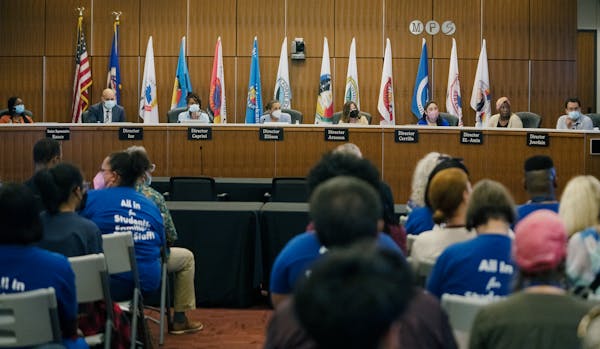Jesse Hoskin spent the first part of last school year worrying about his son, bracing for a phone call about the boy's latest outburst in class.
This year, however, has proven a "180-degree" change from last fall, Hoskin said. His son hasn't had a major behavior issue and now arrives home excited about school. Even before he has his backpack off, he's often breathlessly telling his dad about new friends and after-school activities he wants to join.
Hoskin credits a new support team at Andersen United Middle School for the change. Beginning last year, a team of social workers, counselors, behavior specialists and school leaders worked together to identify his son's needs and develop a plan to keep him focused and excited about school. It could be a model for other schools in the district.
"That's great for him but also for me as a parent because I've learned more about him," Hoskin said.
Since the start of the pandemic, schools across the country have reported more acute mental health needs and an uptick in disruptive behaviors in classrooms and hallways. In Minneapolis, one of the key issues that drove educators to strike for three weeks last spring was a push for more mental health support for students, something that was added to the agreement that ended the strike.
Andersen, in south Minneapolis, has long offered variations of what are called wraparound services, or interventions to support a child's academic, behavior and mental needs. What's new is the model of assigning a dedicated team of staff and school leaders to provide that support at each grade level. The structure was implemented last fall when Andersen transitioned from a preK-8 school to a middle school.
"We made a very intentional choice to hire these people at each grade level so the same group of students has that team of support," said Tara FitzGerald, principal of the school of about 900 students. To maintain those full-time positions during the latest round of budgeting, the administration made some supply budget cuts and increased class sizes from 28 to 32 students, she said.
"We want this to happen so we get creative," FitzGerald said about the team model. "It is almost our number one priority in the building."
While it's difficult to measure what behaviors or incidents the teams' work has prevented, FitzGerald feels that the investment has paid off. Because of the relationships that support team members had with students and each other, they could quickly identify a student who was struggling and proactively intervene, FitzGerald said.
"Just going off the feel of it, I'd say that 50 to 75 percent of possible incidents were prevented because of that," she said.
KimEl' Henry leads restorative practices at Andersen and is a member of the support teams. She said the teams have improved communication between staff and with families, helping to build trust and ensure there's a shared plan of action to meet a student's needs at school and at home.
"I truly believe the model helps with avoiding finger-pointing and instead giving everyone — including the child — the opportunity to have their voice be heard," Henry said. "This allows us to work as a whole community to ask, 'How can we help this child?'"
Each grade-level support team meets for about 50 minutes once a week, going through an agenda that begins with an activity or question aimed at building trust between the team members. They discuss recent student crises and talk through cases of bullying or incidents of hate or bias. The team also shares updates on students who have accommodation plans and those who might need an evaluation for a potential diagnosis.
At a recent meeting, team members swapped ideas about what could motivate a student who has been picking fights and not participating in class. They reviewed the home life of another student who has been struggling, and made a goal to get more detailed attendance data for another middle schooler who often leaves class to wander the halls.
Without the group discussion, it can be easy to get "sucked into just focusing on the behavior because that's what's in your face," said Assistant Principal Jamie Edwards. The team model allows the staff members to focus on their own expertise — whether assisting with the child's behavior, mental health or academic needs.
"Kids need people who can see all the things they need, not just their behavior or diagnosis," Edwards said. "And adults need the clarity so they can focus on helping out where they best can and not have to do everything at once."
Hoskin, the father of the now seventh-grader, said he's relieved to know there's a whole crew of school staff looking out for his child.
On a recent morning, Edwards saw Hoskin's son sitting by himself before school. Because she recognized him and was aware of his needs, she knew better than to rush him to class, offering instead to give him a minute to gather himself before starting his school day.
Before meeting the team, Hoskins was anxious about what high school would be like for his son.
"Now that we have a plan and know what his needs are," Hoskins said, "it feels doable. … That's due to this support."

Souhan: This is KAT's chance to prove Flip Saunders was right

